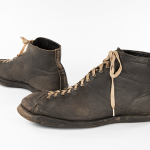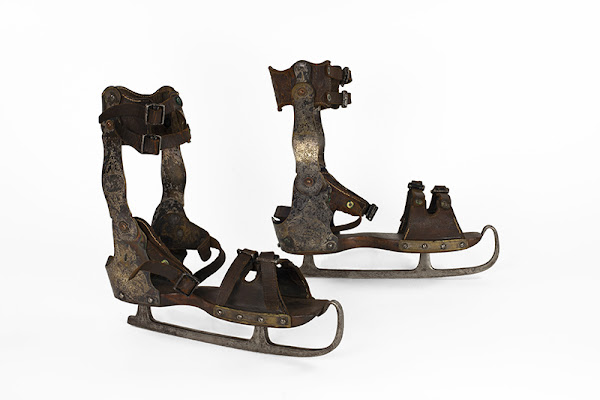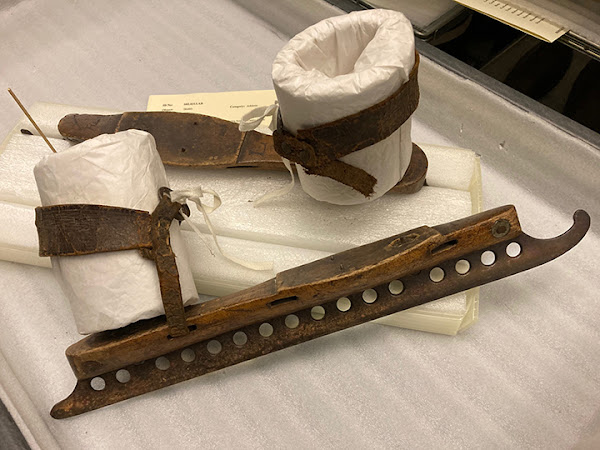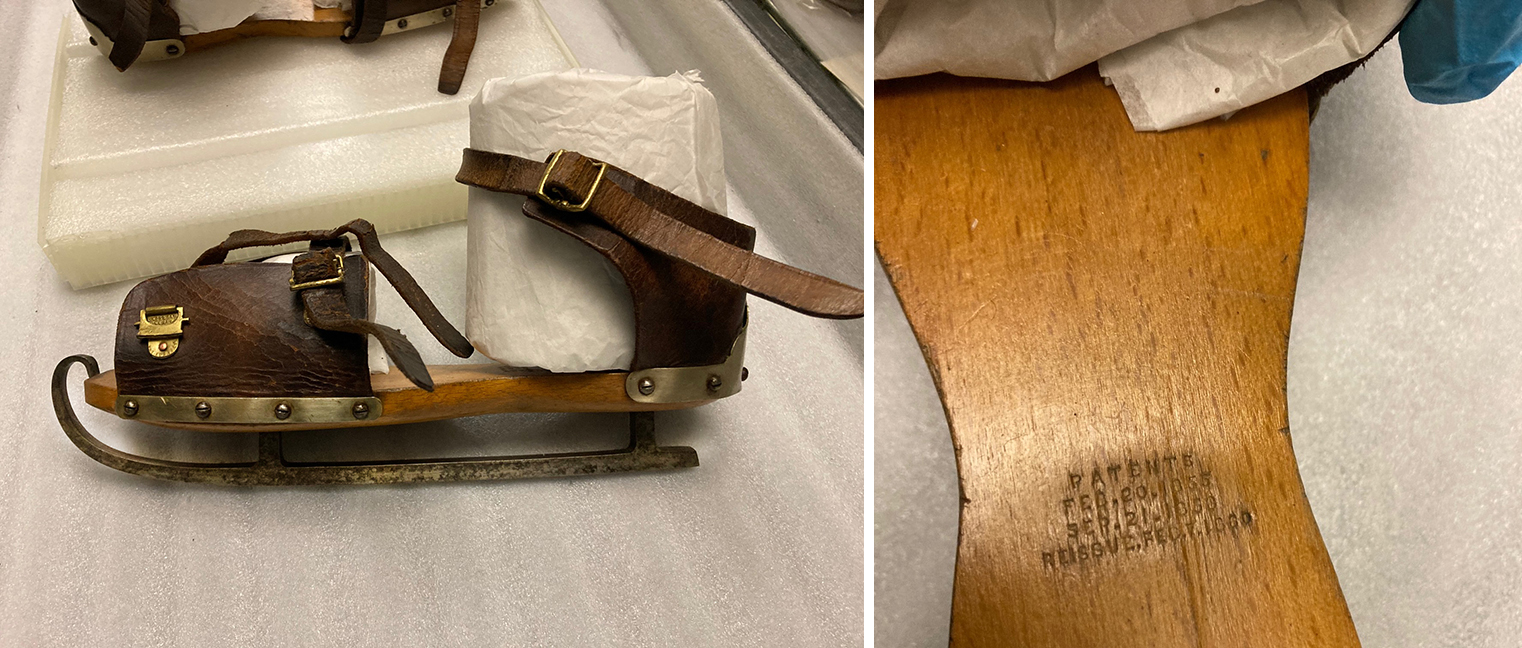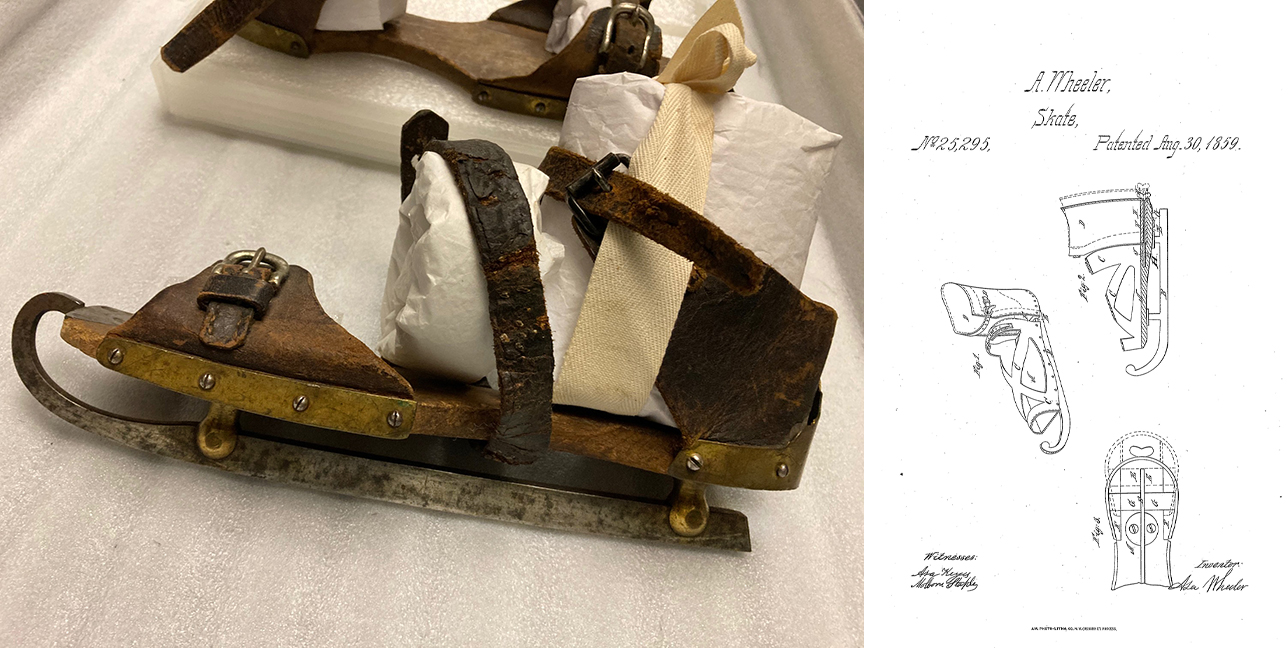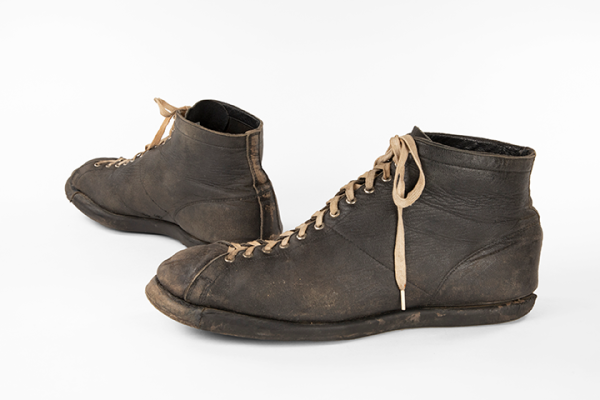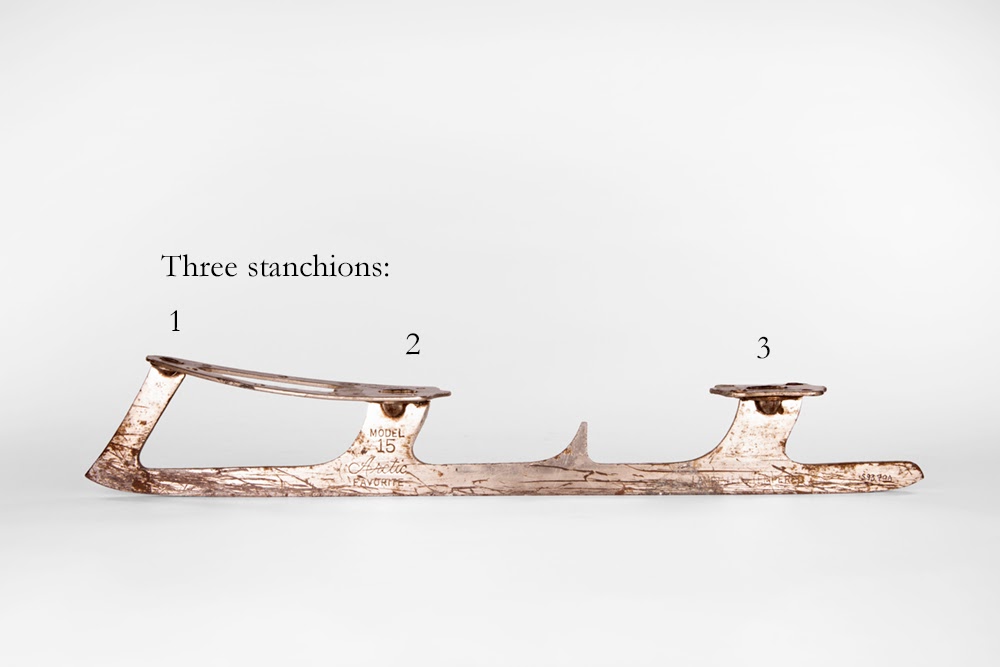Manufactured by Douglas Rogers & Company in Norwich, Connecticut, this is a rarely seen example of a style emerging in the mid-19th century. We have three pairs that are of similar style. Collection of the Bata Shoe Museum. Image © 2021 Bata Shoe Museum.
As we continue to work on the content and artefact selection for the Bata Shoe Museum’s upcoming online exhibition Boots & Blades: The Story of Canadian Figure Skating, some interesting facts are being revealed by research. The Bata Shoe Museum (BSM) has a unique collection of skates of all types, including figure skates, speed skates, hockey skates, leisure skates, long distance skates, early gliders and even a bone glider. For the figure skating exhibition, we’ll be featuring the figure skates and will be including some of the earlier skates that show the developments that resulted in the specialized skates for the sport.
A swan’s profile has been carved into the curl of this pair. Collection of the Bata Shoe Museum. Image © 2021 Bata Shoe Museum.
We are in the midst of researching the origins of a pair of 19th century skates with a front curl in the shape of a swan. This detail would have been time-consuming to make and would have been more expensive than plain skates. It seems this type was most popular in England, Germany and America, so we are looking for possible makers in those countries first.
One of the first skates made by the Canadian skate manufacturer, Starr, in Nova Scotia. Collection of the Bata Shoe Museum. Image © 2021 Bata Shoe Museum.
One of the most exciting realizations we’ve had is that one pair in our collection is much older than we’d thought, and it was designed and manufactured in Canada by the well known Starr Manufacturing, established 1861. Our pair is similar to a pair held by the Dartmouth Heritage Museum, Nova Scotia. You can compare them with ours on the DHM website.
With 15 holes along the blade, this is a distinctive design that would have allowed the skater to move better on snow-covered ice. First made in 1863, it predates Starr Manufacturing’s more famous blade, the ‘ACME’ skate which was launched in 1866.
This pair dates to 1860 at the earliest. The patent stamp shown in detail reads “Patents FEB 20 1855 SEP 21 1858 RE ISSUE FEB 7 1860”. Collection of the Bata Shoe Museum. Image © 2021 Bata Shoe Museum.
We have three pairs that are similar in style that date to the mid-18th century. (Scroll up to see the pair at the very top; it is one of them.) These skates have a heel piece that holds the wearer’s heel securely with a buckle and strap closure. This would have given the skater more control over the blade’s movement. They also all have a blade that curls up and attaches to the wood platform at the front, and ends underneath the wearer’s heel – a much shorter blade than other styles up to this time. Patent information on the skates found in archives reveal the date of this style to be circa 1850-1860s.
This pair is similar to the above style, but includes a leather strap around the instep of the foot. See how similar the style is to the skate drawn in a US Patent dated 1859. The version in the patent has an adjustable sizing feature. Collection of the Bata Shoe Museum. Image © 2021 Bata Shoe Museum.
Suzanne Petersen, Collections Manager


